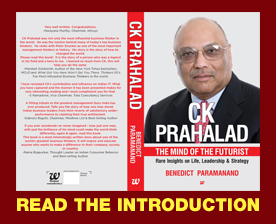The subject of strategy is unique for the many misconceptions managers carry. Here are just three, and what you can do about them.
First mover advantage
That is why many start-ups and young companies rush in before they have developed an effective strategy.
Moving first makes sense when it creates entry barrier. In some industries a large production capacity acts as a deterrent for others. In 1999, Reliance commissioned the world’s fifth largest refinery in Jamnagar, Gujarat, with installed capacity of 27 million TPA. Reliance’s cost advantage pre-empted green-field investment in refining in South East Asia for nearly a decade.
Learning curve advantage and the opportunity to quickly establish a preferred brand are other conditions when moving early can create competitive edge. Titan watches created a huge entry barrier by moving early and building an enviable reputation. In most other situations, especially where entry barriers are low or threat of substitutes high, moving first is not a smart idea.
Companies like Panasonic have made a virtue of moving late. They wait for early players to create a market; then move in with their own products or acquisitions.
Price is our differentiator
Several years ago, a large manufacturer of abrasives, nearly set-off a price war when they decided to drop prices of products that were facing heat from small regional players. Fortunately, a strategy overhaul workshop made them abandon it. They concentrated on a broad portfolio of products for many segments and grew rapidly over the next 7 years.
Price cannot create differentiation. Differentiation succeeds when customers perceive a product’s value proposition to be distinctive. A firm can price its product appropriately to reinforce uniqueness. Tanishq claims a premium for the design value of its jewelry. BMW cars are priced high to reflect superb engineering and driving experience, and so on.
Innovation is the NEW strategy
Strategy is doing things differently or doing different things (Porter). Configuring value chains in unique ways to achieve cost advantage or differentiation over competition is strategy.
A firm can find innovative ways to achieve cost advantage: Foxcon on production systems for outsourced manufacturing. Apple has innovated product design and development to create unique products. Sigma Aldrich, the specialty chemicals company, has applied innovation to achieve differentiation through how they work. These companies have consistently surpassed their peers in growth and financial performance.
Innovation is imperative in crafting strategy but it is not strategy
Misconceptions are insidious. They take root as assumptions and become collective beliefs. Confirmation bias sets in and becomes difficult to eliminate. A solution is to keep erroneous beliefs from germinating by regularly training managers on strategy. It is most effective when they simultaneously understand that their firm has a clear and effective strategy.
Every firm that wants to avoid contaminating managers’ thinking of strategy must develop its own point of view on what will make it competitive. That is a responsibility top management must not ignore.
(vn@vnbhattacharya.com) (www.vnbhattacharya.com)












Recent Comments